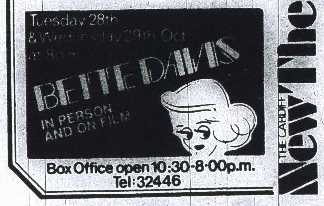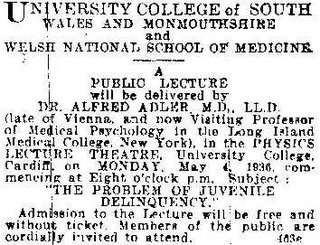Bette Davis' Welsh Farewell

When Bette Davis swanned into Cardiff in 1975 she held a press conference, naturally. At the Angel Hotel local hacks were feeding out of her hand: "It's wonderful to be in Wales," she charmed, "I have been here twice before and I'm in love with it." Yes indeed, her ancestors were Welsh - they just dropped the 'e' from the surname in America was all. The hacks swooned, hotel staff fawned - a bona fide legend was in their midst.
Bette Davis was in town to perform her one woman show In Person and on Film (for 2 successive nights) at the New Theatre.
On the first night the crowd packed the auditorium ready to glimpse the 67 year old Hollywood goddess. Arriving on stage to rapturous applause she was quickly into her stride. Like some kind of uber-bitch film lecturer she showed clips of old movies, commenting on her roles and passing judgement on her fellow actors. All About Eve flickered onto screen; The Corn is Green; Now Voyager. She lit a cigarette.
The second part of the show consisted of a question and answer session with the audience. Somebody welcomed her in Welsh and told her how to pronounce nos da. Wales is a "beautiful, beautiful, country", she faux-gushed to her adoring and appreciative fans. The questions began. Her favourite director? William Wyler. Her favourite food? That was easy - potatoes!
And so it continued for 80 minutes until, after taking her last bow, she declared (ad libbing from Cabin in the Cotton): "I'd love to kiss you all but I've just washed my hair." And then finally, after effortlessly conquering the hearts of her new Welsh subjects, a queenly: "nos da!"










